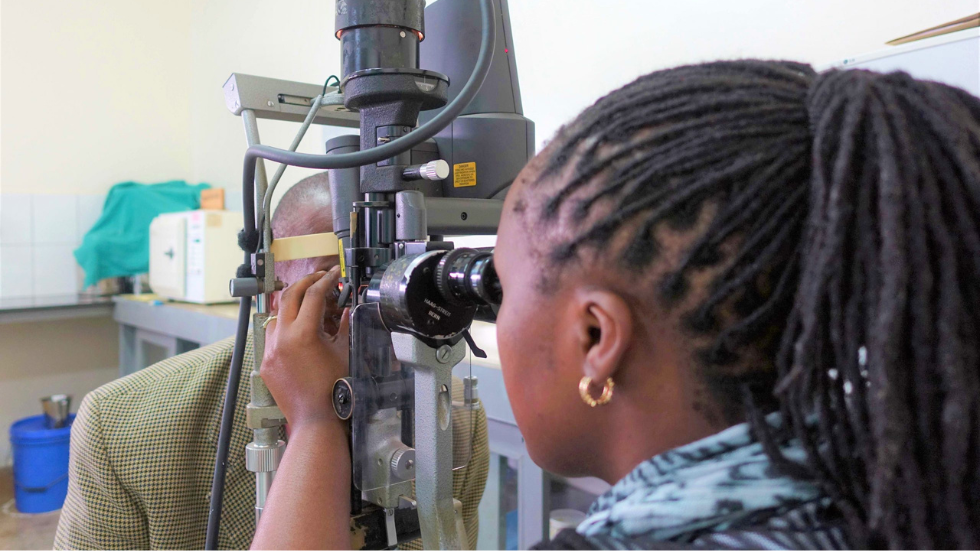Glaucoma Research Projects
The glaucomas can be defined as a group of eye diseases affecting the optic nerve that lead to progressive and irreversible visual field loss. While early stages may be asymptomatic, later stages can lead to irreversible absolute blindness, particularly if left untreated. Currently, the main treatment is to reduce elevated intraocular pressure, which is the main risk factor for the disease.
Globally, the glaucomas are the most frequent cause of irreversible blindness. The highest prevalence and incidence of glaucoma is found in the African region. Also, the prevalence of blindness resulting from glaucoma is higher in sub-Saharan Africa than in other regions of the world.
To provide more evidence to tackle these challenges, we are focusing on the early detection and treatment of glaucoma, in collaboration with colleagues and institutions in Nigeria, Tanzania, Ghana and others.

Selective Laser Trabeculoplasty (SLT) vs Timolol Trial
We carried out a key clinical trial in Tanzania, comparing laser treatment to the current standard eye drops for glaucoma in LMICs.

Diagnosis, Detection and Treatment of Glaucoma in Africa
In LMICs, only a small proportion of glaucoma is diagnosed in time to save patients’ sight. We are working to improve methods of diagnosis and detection.

Vitamin B3 and glaucoma in West Africa
We are running a trial to assess the relationship between vitamin B3 (niacin) and glaucoma. The trial is the first of its kind in LMICs.

The Glaucoma Network
The Glaucoma Clinical and Research Network (Glaucoma-NET) was established in 2021 to improve diagnosis and treatment with the aim of preserving and maximising the sight of people with glaucoma through a range of activities including knowledge-sharing and development of clinical services. These are geared towards reducing vision loss and blindness caused by glaucoma.
Glaucoma Research Projects
The glaucomas can be defined as a group of eye diseases affecting the optic nerve that lead to progressive and irreversible visual field loss. While early stages may be asymptomatic, later stages can lead to irreversible absolute blindness, particularly if left untreated. Currently, the main treatment is to reduce elevated intraocular pressure, which is the main risk factor for the disease.
Globally, the glaucomas are the most frequent cause of irreversible blindness. The highest prevalence and incidence of glaucoma is found in the African region. Also, the prevalence of blindness resulting from glaucoma is higher in sub-Saharan Africa than in other regions of the world.
To provide more evidence to tackle these challenges, we are focusing on the early detection and treatment of glaucoma, in collaboration with colleagues and institutions in Nigeria, Tanzania, Ghana and others.
Selective Laser Trabeculoplasty (SLT) vs Timolol Trial
We carried out a key clinical trial in Tanzania, comparing laser treatment to the current standard eye drops for glaucoma in LMICs.
Diagnosis, Detection and Treatment of Glaucoma in Africa
In LMICs, only a small proportion of glaucoma is diagnosed in time to save patients’ sight. We are working to improve methods of diagnosis, detection and treatment.
Vitamin B3 and Glaucoma in West Africa
We are running a trial to assess the relationship between vitamin B3 (niacin) and glaucoma. The trial is the first of its kind in LMICs.
The Glaucoma Network
The Glaucoma Clinical and Research Network (Glaucoma-NET) was established in 2021 to improve diagnosis and treatment with the aim of preserving and maximising the sight of people with glaucoma through a range of activities including knowledge-sharing and development of clinical services. These are geared towards reducing vision loss and blindness caused by glaucoma.
